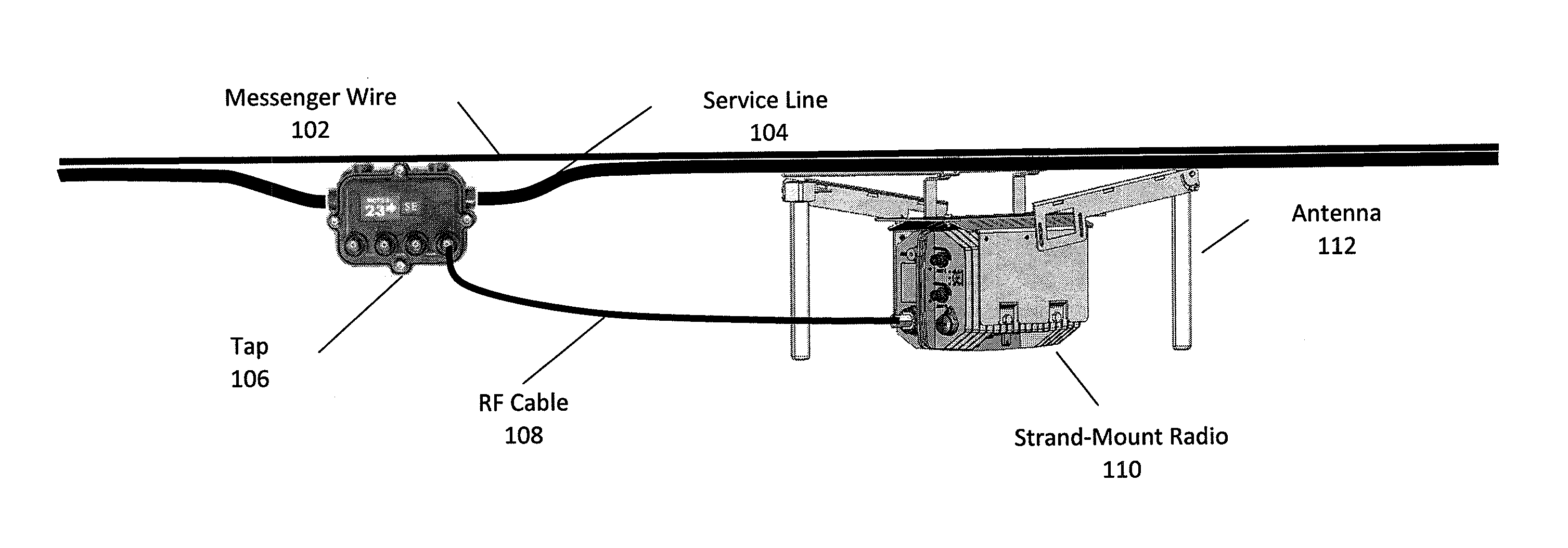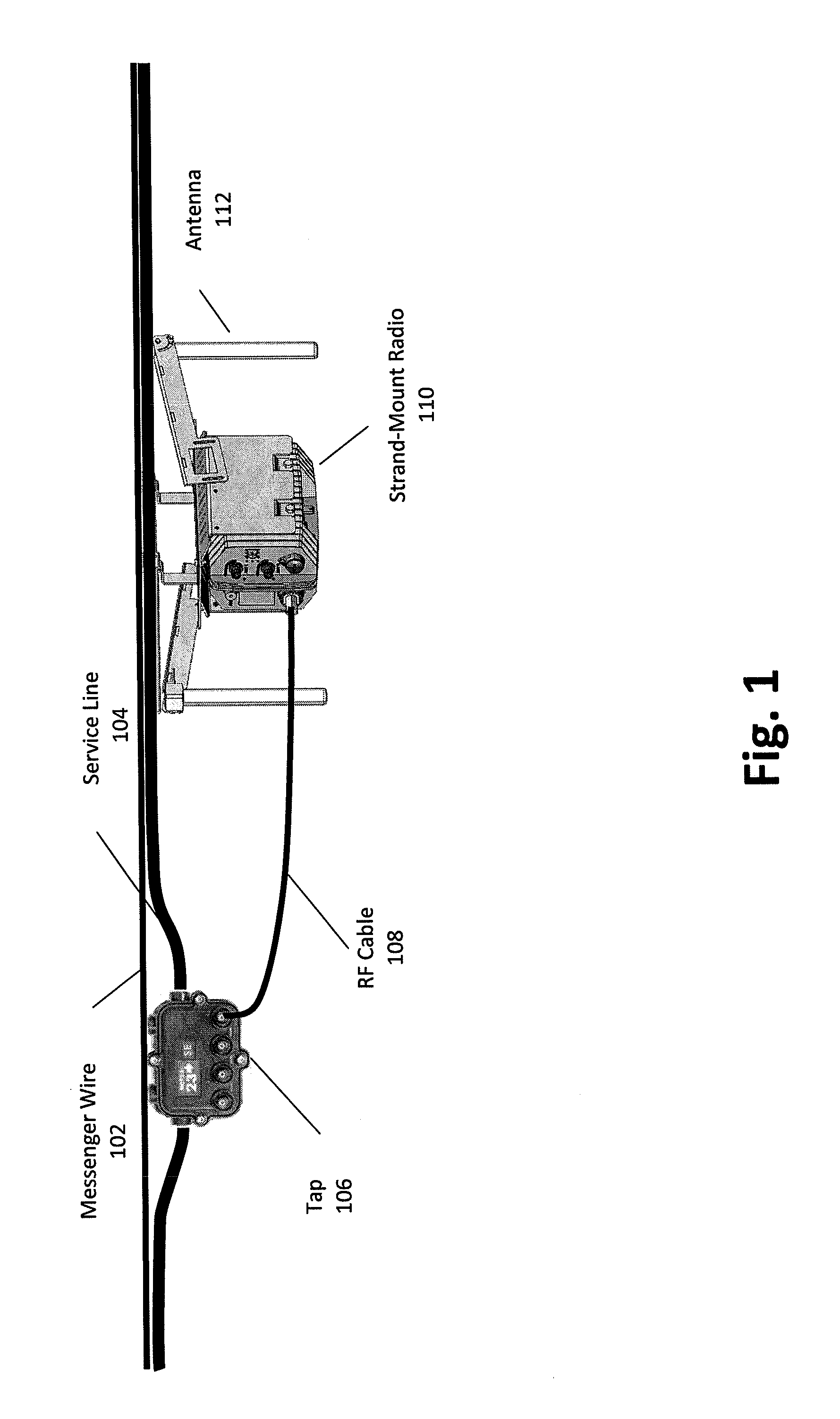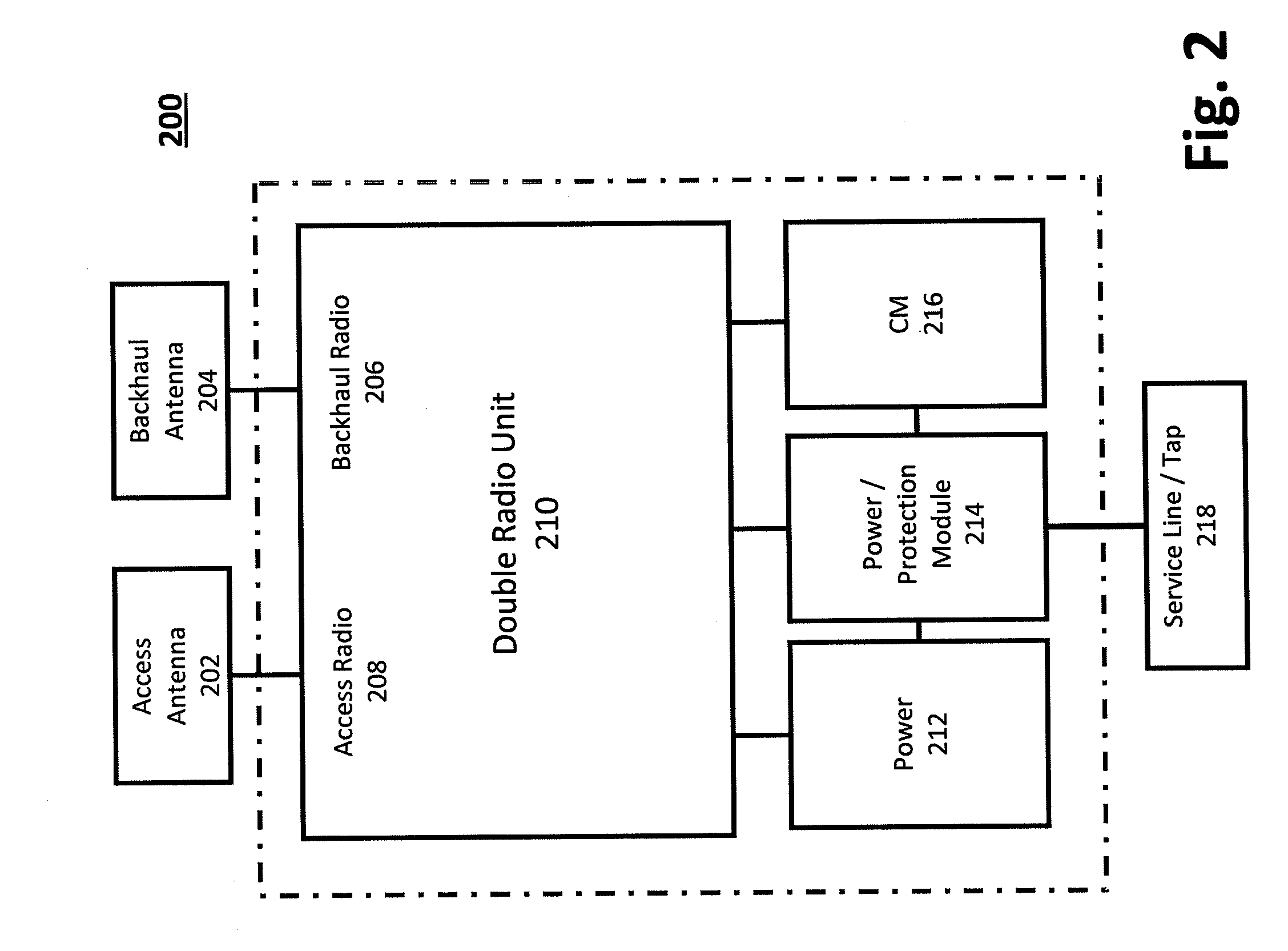Cable modem with dual automatic attenuation
a modem and automatic attenuation technology, applied in the field of wireless communication systems and attenuation management, can solve the problems of inability to achieve the effect of attenuation, and inability to prevent signal loss, etc., and achieve the effect of reducing or eliminating
- Summary
- Abstract
- Description
- Claims
- Application Information
AI Technical Summary
Benefits of technology
Problems solved by technology
Method used
Image
Examples
Embodiment Construction
[0040]Preferred embodiments of the present invention will be described hereinbelow with reference to the accompanying drawings. In the following description, well-known functions or constructions are not described in detail because they would obscure the invention in unnecessary detail.
[0041]Described herein are a number of steps, methods, and solutions which may be applied to greatly improve attenuation control of cable-propagating RF signals. The preferred embodiment is directed to a DOCSIS cable modem Auto-Attenuation System (the “Auto-Attenuation System”), but may be applied to any signal transferring system. The Auto-Attenuation System may be capable of taking a high-power signal from the cable plant's service line, dropping the power value down to a usable level, and providing the signal to a cable modem (CM) while eliminating the need for rigorous specifications that a normal cable modem often requires. In certain embodiments, an Auto-Attenuation System may be integrated into...
PUM
 Login to View More
Login to View More Abstract
Description
Claims
Application Information
 Login to View More
Login to View More - R&D
- Intellectual Property
- Life Sciences
- Materials
- Tech Scout
- Unparalleled Data Quality
- Higher Quality Content
- 60% Fewer Hallucinations
Browse by: Latest US Patents, China's latest patents, Technical Efficacy Thesaurus, Application Domain, Technology Topic, Popular Technical Reports.
© 2025 PatSnap. All rights reserved.Legal|Privacy policy|Modern Slavery Act Transparency Statement|Sitemap|About US| Contact US: help@patsnap.com



